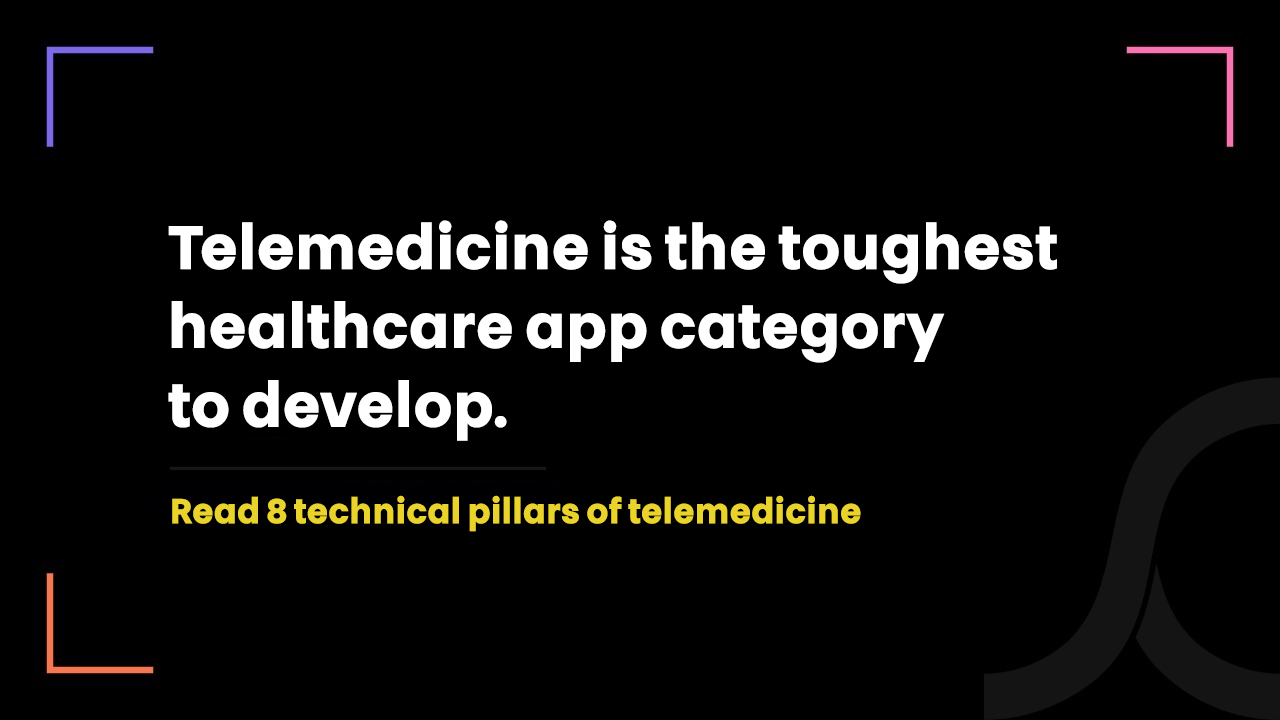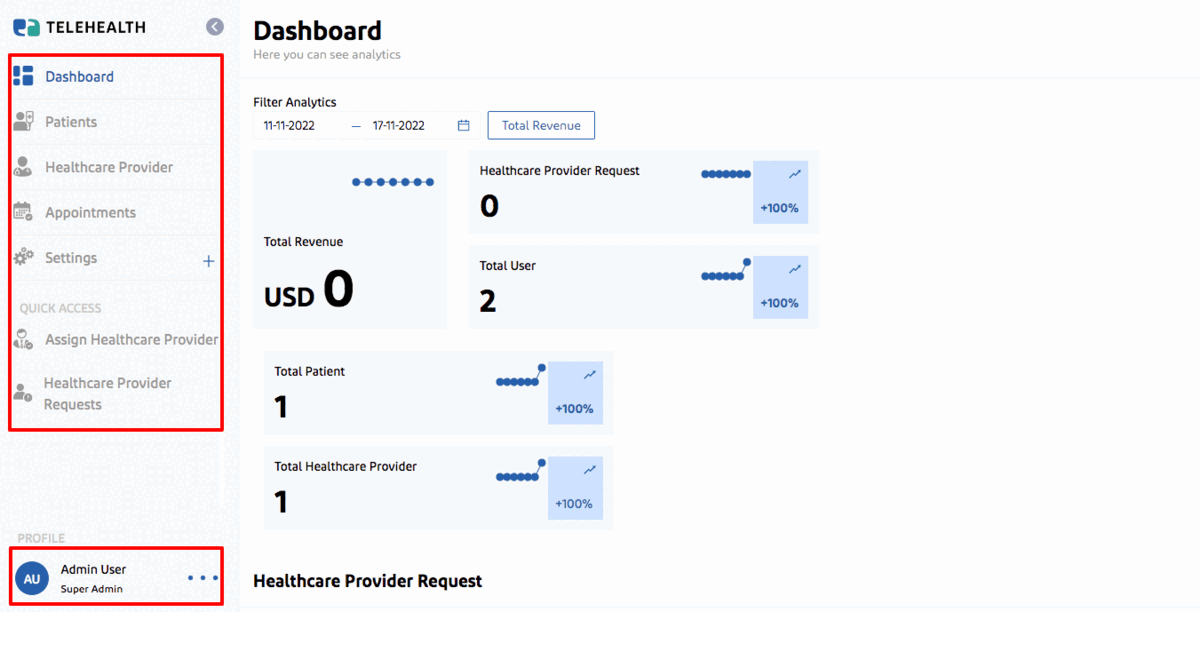How to Develop a Telemedicine App in 2023? [A Technical Guide]

4 years ago
A kind reminder: A telemedicine app is not a video calling app!
It is limitless, game-changing and complex.
If it was so easy to develop a telemedicine app, we would have never invested our time writing a dedicated blog on it!
Another reason we are writing this dedicated blog is that - the technical implementation while developing a telemedicine app influences budget, time and app’s success greatly.
So, without further ado, let us share all the technical elements of the telemedicine system.
How to Develop a Telemedicine App?: 8 Technical Pillars of a Successful Telemedicine App/Platform/System
Be it a cross-platform app, native app or web app, the following technical elements must be addressed while developing a telemedicine app.
1) EHR/EMR Integration
Imagine a scenario where the physician on a telemedicine app has no access to the medical history of the patients he is having a video visit with.
The physician either has to ask patients several questions regarding their medical history or write prescriptions without knowing their medical history.
In either way, the physician cannot offer quality care (without easy access to the medical data of patients).
This is why it is important to integrate EHR into your telemedicine app.
An EHR is software that stores all patient data generated by different healthcare providers such as hospitals, labs etc.
With a successful EHR integration, the physicians can instantly get access to all patient data from the app itself.
If you’re a healthcare provider and adopting a telemedicine app for internal use, you should also consider integrating the EMR you are using in-house.
This makes it easy to transfer all of your patient data from EMR to the app.
Challenging part:
Interoperability - the ability of EHR/EMR and your telemedicine system to exchange and make use of information - has been the major challenge while integrating EHR/EMR.

Thus, there is a standard set for achieving interoperability. It is known as FHIR (Fast Healthcare Interoperability Resources).
While carrying out EHR integration, the developers must write code according to the standards provided by FHIR.
2) Video Calling API Integration
The major feature of the telemedicine app is its advanced video calling ability that promotes collaboration over communication.
However, developers cannot achieve advanced video calling abilities by writing code natively. They must integrate third-party video calling API for a seamless video calling experience.

Vonage, Twilio are a few examples of a video calling API.
These video calling APIs charge a monthly fee based on the usage.
Twilio charges $0.0015 per minute for its p2p video calling API.
3) Payment API Integration
Telemedicine app users who aren’t covered under any insurance plan must pay a visit fee through the app itself.
Here also, developers cannot code the entire payment module effectively. Thus, they integrate payment API into your telemedicine software.
With this integration, the users of your app can make payments using several payment methods and the amount instantly gets transferred into your account.

Stripe, Paypal are examples of the payment API.
These payment APIs charge a few percent on each transaction value.
For example, Stripe charges 2.9% + C$0.30 on each transaction.
4) ePrescription
After video calling, ePrescription is another vitally important feature of the telemedicine app.
It enables physicians to write the prescription online and easily shares it with pharmacists to fill it.
The pharmacy’s prescription management system receives the prescription sent by the physicians.
This entire system-based process eliminates the scope for any manual coordination work or paper-based work.
However, it will take months for developers to develop such an ePrescribing solution from scratch.
Thus, they would prefer to integrate a plug-and-play ePrescribing solution provided by top industry players.
Read our detailed guide on: Prescription app for doctors
5) Billing Codes
In Alberta, Ontario and B.C., televisit with physicians is covered under the provincial health insurance plan.
Meaning, any resident from these provinces who have a health card is eligible for free televisit with the physician.
In these provinces, the government pays the physicians for televisits on behalf of the patients.
But to get the visit fee, the physicians should claim it using the billing codes. Each fee code corresponds to a specific dollar amount.
Thus, your app should have a module that enables physicians to claim the visit fee by entering the billing codes and other details from the app itself.
To accomplish this, developers must integrate top healthcare billing software such as ClinicAid, Dr. Bill, Md Billing etc.

Here it is worth mentioning that there are different billing codes in different provinces and not all billing software supports the billing codes of all provinces.
6) Health Card Number Validation
Imagine a scenario where a patient books a virtual appointment with the physician by entering all details including his health card number.
Now the questions are, is the entered health card number valid? And if valid, who is going to validate it and how?
Your app should be developed in such a way that it either automatically validates the health card number or lets physicians validate the health card number manually from the app itself.
Fortunately, many billing software offer built-in health card validation (HCV) features.
This allows you to validate the health card number of patients automatically when they enter the details while booking the virtual appointment with the physicians.
7) Compliance
You must be thinking, compliance is the legal thing, not the technical thing!
If you are thinking so, you are horribly wrong.
Because Canadian data privacy laws outline many technical requirements to be fully compliant.
For instance, there is one requirement under PHIPA - healthcare providers cannot collect and use health cards and health numbers.
To meet this requirement, your app should be ‘technically’ developed in such a way that it validates the health card number and later automatically destroys the health card number data.
There are many such requirements that require a technical implementation to actually satisfy those requirements and be fully compliant with the data privacy laws.
8) Sophisticated Matching Algorithms
If you are planning to develop an on-demand telemedicine app where the app itself finds the perfect physician instantly for the patient, the app should work on sophisticated algorithms.
These algorithms consider real-time factors such as the patient's requirements, location, physician’s availability to instantly schedule a virtual visit with the physician.
These algorithms make sure that a patient gets access to a physician within 2-5 minutes.
That’s it for today. If you still have doubts, you can contact our healthcare experts for a free consultation.
We Develop Custom Telemedicine App From Scratch and Also Provide Ready-To-Use White-Label Telemedicine Solution
We're an Ontario-based healthcare-centric app development company.
We have been proactively solving the challenges of the Canadian healthcare industry for 8+ years.
Our team accommodates app developers, app designers, business experts and even compliance experts.
Meaning, we don’t only solve technical issues but help you with business and compliance too.
Being a Canadian company, we understand the gravity of compliance. Thus, we only develop a healthcare compliant telemedicine app.
The following are some of the real screenshots of our white-label telemedicine app.

